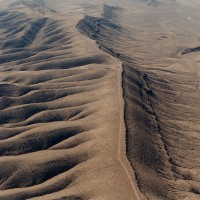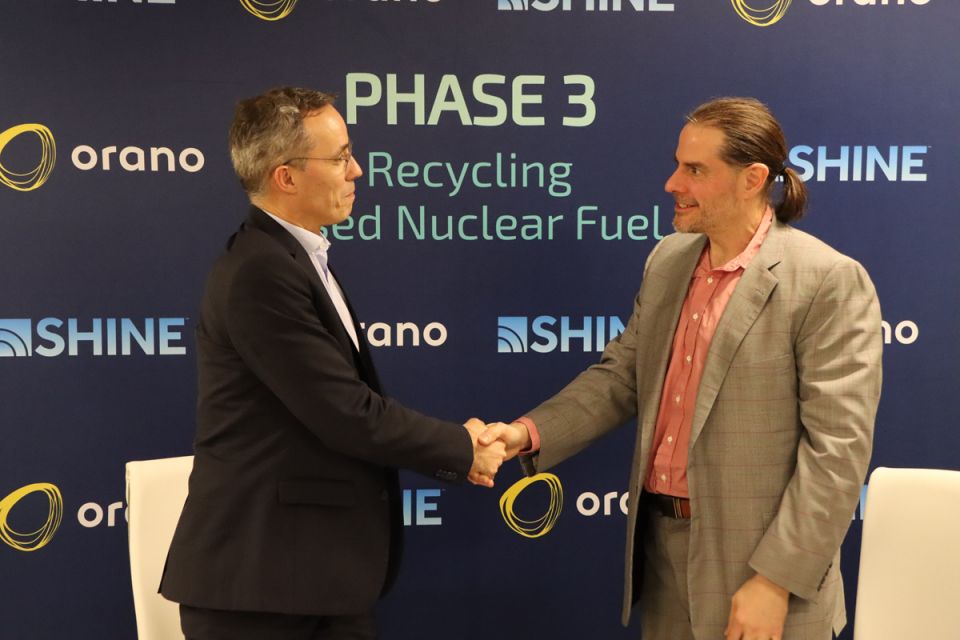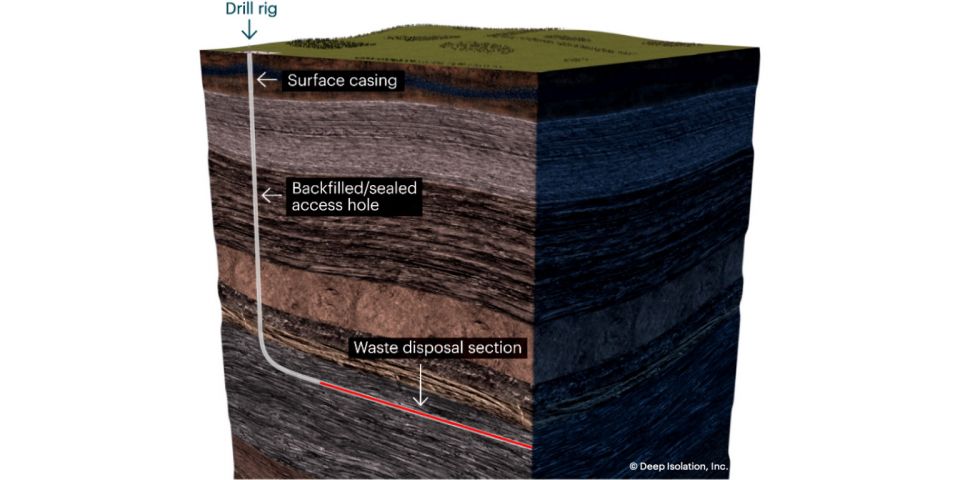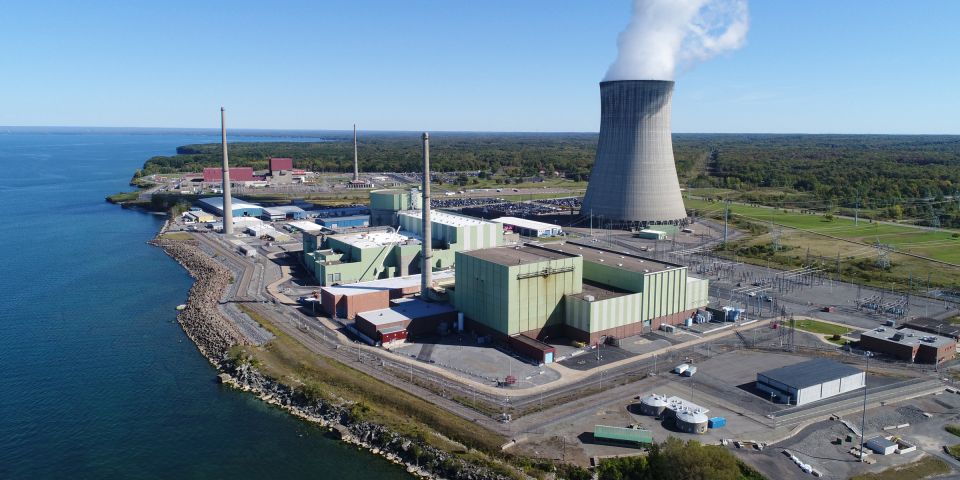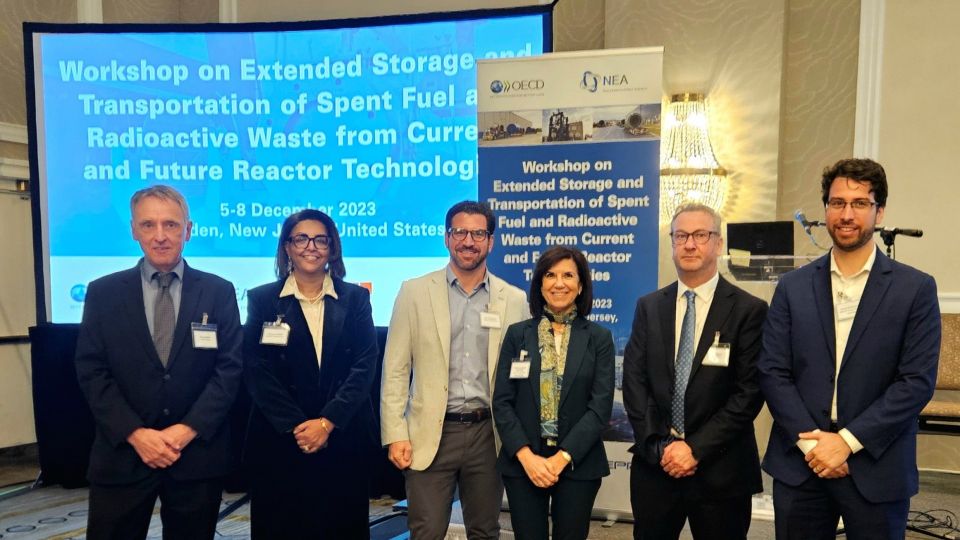Nuclear Waste Policy Recommendations from Blue Ribbon Commission
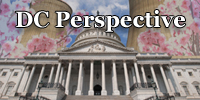 On May 13, the Blue Ribbon Commission on America's Nuclear Future released its draft conclusions and recommendations. Despite its more general sounding title, the commission's work mostly concerned the nuclear waste issue. It was created by President Obama's administration primarily to investigate alternatives to the proposed Yucca Mountain repository, after the administration moved to shut that program down. While the commission did release some recommendations on other issues such as advanced reactors and Fukishima, this post will focus on its recommendations concerning nuclear waste policy.
On May 13, the Blue Ribbon Commission on America's Nuclear Future released its draft conclusions and recommendations. Despite its more general sounding title, the commission's work mostly concerned the nuclear waste issue. It was created by President Obama's administration primarily to investigate alternatives to the proposed Yucca Mountain repository, after the administration moved to shut that program down. While the commission did release some recommendations on other issues such as advanced reactors and Fukishima, this post will focus on its recommendations concerning nuclear waste policy.
Blue Ribbon Commission's recommendations
A summary of the key conclusions and recommendations is as follows:
One or more geologic repositories must be sited and developed at some point.
- No foreseeable future reactor and/or fuel cycle technology will avoid the need for at least one final repository.
- There is scientific consensus that deep geologic disposal is the best option for final nuclear waste disposition.
- The process for siting and developing the repository should be objective and scientific.
- The performance standards for any repository should be set by the Nuclear Regulatory Commission and the Environmental Protection Agency (as they are now).
- Repository siting should be consent-based, with all levels of government (federal, state, and local) involved in all parts of the process, from the very beginning.
One or more centralized interim storage sites for used fuel should be developed.
- The fuel would be stored at these sites for up to ~100 years.
- Such facilities should be developed and licensed using the same standards and methods used to develop a repository.
- Decommissioned plants should be first in line to have their used fuel taken to a centralized storage facility.
- There are, however, no technical or safety reasons why used fuel can not be stored at the plant sites, for a similar period.
There should be a sustained, federally supported R&D effort to develop advanced reactors and fuel cycles.
- While not eliminating the need for at least one repository, such technology development can increase safety, reduce costs, improve resource utilization, and minimize proliferation risks.
A new, independent organization should be created to site and develop the repository and centralized storage facilities, along with any waste storage and transportation infrastructure.
- The new organization would be more independent of the government (i.e., the Department of Energy).
- It would have more institutional and programmatic stability.
- The organization would have assured, steady access to the Nuclear Waste Fund to perform the necessary activities.
Any real answers-or just stalling?
All in all, there is not much in the way of new insights here. The recommendation for long-term used fuel storage (to allow the repository issue to be kicked down the road) was expected from the very beginning. They say that siting of repositories or centralized storage facilities should be consent based, but do not offer much new in terms of solving the (so far) intractable problem of getting such consent. The commission also doesn't explain how or why it will be significantly less difficult to site centralized storage facilities than it was (or will be) to site a repository. History suggests that it won't.
Experience shows that problems with siting always occur at the state level. Many may be surprised to learn that such projects generally have support at the local level (from both the people and the government). As with nuclear power plants, Yucca Mountain enjoyed support in the local, rural communities. The reason for this is that the benefits to the local area, in terms of jobs and tax base, etc., are significant. On the state level, such benefits are much more diluted, but since there is only one repository in the United States, the state still feels singled out and put upon, and has fears of being stigmatized.
My understanding is that in Scandinavia-the one place where consent appears to have been obtained to build repositories-there is no "state" government, just federal and local. Is that a coincidence? I think not.
The one thing the commission recommends that tries to take a stab at the consent problem is the suggestion that the waste be handled by a new "objective" and "independent" organization. Over the years, some distrust has developed between some populations and the DOE (mainly in the West, due to weapons testing, etc.). Getting the DOE out of the picture could help somewhat, but I don't see it fundamentally altering the situation described above.
 The commission also does not do much to clarify any significant benefits of setting up centralized storage facilities, as opposed to just leaving the used fuel in storage at the plant sites. In addition to the significant cost of siting and developing the central storage facilities and moving the fuel there, the waste transport involved will generate significant political resistance. Why would anyone decide to spend a large amount of political capital to do this? As the commission itself states, the risks-and costs-of just keeping the fuel in dry storage at the plant sites is very low.
The commission also does not do much to clarify any significant benefits of setting up centralized storage facilities, as opposed to just leaving the used fuel in storage at the plant sites. In addition to the significant cost of siting and developing the central storage facilities and moving the fuel there, the waste transport involved will generate significant political resistance. Why would anyone decide to spend a large amount of political capital to do this? As the commission itself states, the risks-and costs-of just keeping the fuel in dry storage at the plant sites is very low.
It appears (to me) that the main impetus behind the centralized storage idea is to appear to be "doing something" about the waste issue, now that the repository has been delayed by decades. My personal view is that this will not happen (due to the lack of any real justification), and the used fuel will remain stored at the plant sites.
Yucca Mountain
The fact that Yucca Mountain was not even considered by the Blue Ribbon Commission is unfortunate. In a highly critical recently released report, the Government Accountability Office (GAO) concludes that the administration's shutdown of the Yucca program was for purely political (as opposed to scientific or technical) reasons. The GAO also concludes that the Yucca decision will put us back to square one in terms of siting and developing a repository, which will result in decades of delay, as well as wasting most of the money spent so far on the program. It will also result in larger amounts of fuel being stored at plant sites, for much longer periods. For the above reasons, the GAO report recommended that the administration consider restarting the Yucca program.
Many other parties are also bitterly opposed to the abrupt and political termination of the Yucca program. Many assert that the DOE did not have the authority (under the Nuclear Waste Policy Act) to withdraw the Yucca license application, and that the NRC does not have the authority to stop the licensing review. Lawsuits have already been filed. Also, congressional investigations of the NRC and the DOE have started. There is a good chance that the DOE will be ordered to restart the program, or that the NRC will be ordered to finish the licensing process.
In addition to the issues identified by the GAO report, one of the main (if not THE main) impact of starting over on the repository is that it will allow one of the most potent arguments against nuclear energy to live on for decades. A large fraction of the public believes that the nuclear waste problem is intractable, and that there is no technological solution. This is not true. The Blue Ribbon Commission concurred (with the GAO) that the main obstacles to repository siting are political, as opposed to scientific. Despite scientific opinion, until a repository is sited and licensed, many people will continue to believe that there is no solution, which will result in significantly more opposition to new nuclear power plants, and more use of (truly damaging) fossil fuels in the future.
A possible compromise?
 The concern raised above has me thinking about a possible compromise on Yucca that could be of some value. While I believe that proceeding with Yucca is the best option, another option (that would be far better than nothing) would be to have the NRC complete the licensing process (and approve the repository, presumably). The administration would then state that although Yucca has been shown to be an acceptable long-term solution, they believe that there are (even) better solutions (e.g., reprocessing) that should be pursued instead. To that end, the fuel will be stored for a few more decades while those other options are explored. If nothing pans out, there is always the (acceptable) Yucca option.
The concern raised above has me thinking about a possible compromise on Yucca that could be of some value. While I believe that proceeding with Yucca is the best option, another option (that would be far better than nothing) would be to have the NRC complete the licensing process (and approve the repository, presumably). The administration would then state that although Yucca has been shown to be an acceptable long-term solution, they believe that there are (even) better solutions (e.g., reprocessing) that should be pursued instead. To that end, the fuel will be stored for a few more decades while those other options are explored. If nothing pans out, there is always the (acceptable) Yucca option.
Such an approach would let Nevada get its way in terms of avoiding (or at least greatly delaying) the Yucca repository, but it may go a long way toward alleviating public concerns over the "intractable" nuclear waste problem. It's possible that this could eliminate most of the opposition to nuclear that is due to waste concerns. Many would argue that Nevada would never go for such a deal, since NRC approval would carry too much political weight in terms of restarting the program. On the other hand, as I discussed earlier, the courts and/or congressional pressure/investigations may end up forcing the NRC to complete the licensing review anyway.
____________________________________________________
Jim Hopf is a senior nuclear engineer at EnergySolutions, with more than 20 years of experience in shielding and criticality analysis and design for spent fuel dry storage and transportation systems. He has been involved in nuclear advocacy for 10+ years, and is a member of the ANS Public Information Committee. He is a regular contributor to the ANS Nuclear Cafe.


